William Sydney Gammell
1905-1997
William Sydney Gammell (known as Willie) was born on 9 October 1905 at Countesswells, the sixth child of Sir Sydney James Gammell of Countesswells and his wife Alice Stobart. Taught first by the family governess, he was sent to Ardvreck, a boarding preparatory school near Crieff, and then on to Winchester College, where he seems to have enjoyed the sports more than the academic studies. He was also keen on country pursuits, learning to shoot game birds and stalk red deer around Countesswells.
After leaving school he moved to London and in 1923 found a job with Burt, Boulton and Haywood, a timber importing and processing firm. For recreation he played first-class rugger with Rosslyn Park during 1926-7. An eye injury sustained in the field left him with the partial loss of sight in his left eye – which may have saved his life as it prevented him from being sent to the front line during World War II. It caused .
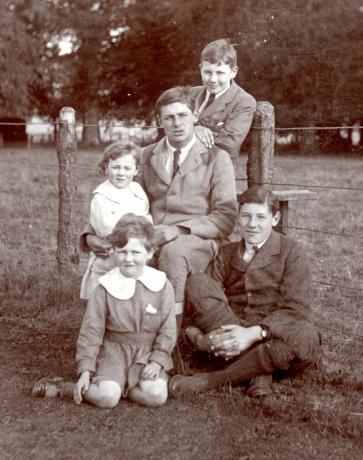
William (front left) with his brothers, James (centre), Harry (front right), Dick (back) and Edward (centre left) in about 1911
him little trouble, he continued to drive a car safely until he was 90, and in later life was affectionately referred to as ‘The Mighty Monocle’ because of his eye-glass
As a young bachelor he was invited to family house-parties by Charles Haywood, Company Chairman, where he met their daughter Mary (known as Susan) but their courtship was interrupted when in 1929, the firm sent Willie to Nigeria for a year to work on their tropical timber imports. After this he was allowed to take her out to dinner in London unchaperoned, but he seemed reluctant to commit himself until his elder sister Finella took him and Susan to ski in Switzerland. They returned engaged and were married in Reigate on 29 January 1931.
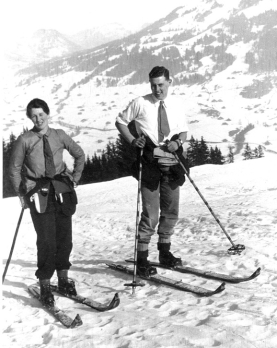
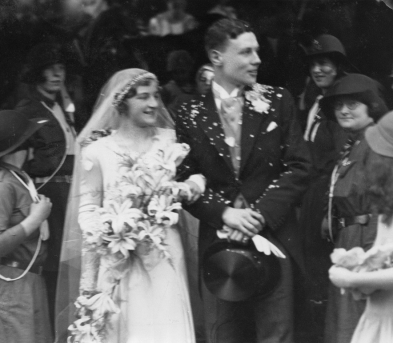
William skiing with his sister, Finella Gammell 1930 William and Susan's marriage 1931
Not wanting to be beholden to his future father-in-law, Willie had moved in 1930 to work as Assistant Advertising Manager with the tobacco company Gallaher. The young couple set up home in Merstham, Surrey, not far from Susan’s parents and their daughter Janet was born on 6 November 1935. The following year, perhaps seeking better job security, Willie became Assistant Secretary to the Association of Investment Trust Companies (AIT), a relatively new organisation set up in the City of London to oversee the interests of these companies and their shareholders.
After the outbreak of war he joined the Home Guard but, wanting a more active role, in July 1940 he enlisted as a trooper in the Lovat Scouts, a regiment originally recruited from gamekeepers and ghillies to serve as sharpshooters in the Boer War, and which still prided itself on its distinctive and somewhat unorthodox character. It suited Willie, who was soon commissioned and sent off to garrison the Faroe Islands, returning in 1941 for a short spell to act as ADC to his brother James. Meanwhile, fearing imminent invasion, he had arranged for Susan to take refuge, with Janet, at the Forfar home of his sister Barbara Hill, where Iain was born on 30 November 1940.
During the war King George VI, with Queen Elizabeth and the Princesses Elizabeth and Margaret, still took his much-prized annual holiday at Balmoral Castle but strong military protection was needed and during the two summers of 1942 and 1943 the Lovat Scouts provided this guard. Willie, now Adjutant, found himself organising his officers to shoot and stalk with the King, and to dine and dance with the Queen and Princesses, all just a few miles from where he had grown up.
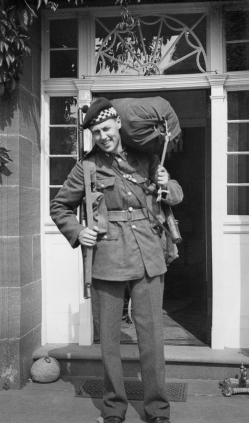
In 1940 William enlisted in the Lovat Scouts
Below: The Lovat Scouts at Balmoral in 1943, Captain William Gammell second from the right in the front row, sitting next to Princess Margaret.
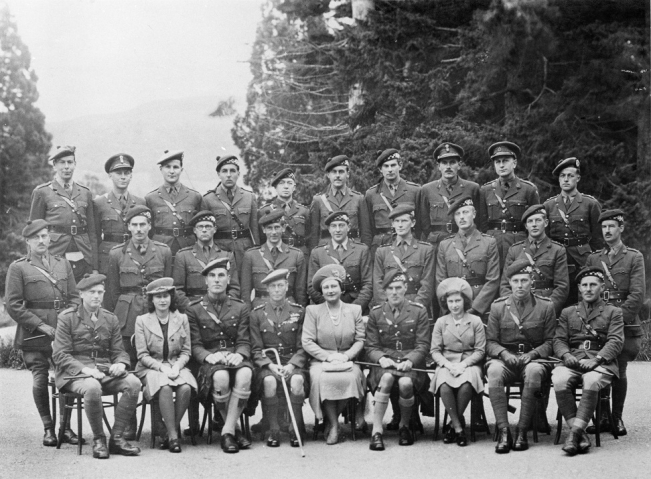
He found the Royal Family very congenial, the King a true sportsman, the Queen charming and relaxed, the two Princesses, then in their teens, maturing into the two very different women they would become. (His written reminiscences of that time are kept privately by his descendants.)
After the regiment had started their training in mountain warfare Willie, graded medical category B because of his eyesight, was sent to the Staff College in Sandhurst and then appointed, first, GSOII Hants & Dorset District and then GSOII Aldershot District. The family had spent the rest of the war in Newtonmore, where they had bought a small cottage, and their third child David was born in Edinburgh on 12 March 1945. At the end of the war they returned to their house in Limpsfield, Surrey.
Willie was demobilised in October 1945 and returned to the AIT. In 1953 he became its Secretary, and remained there until his retirement in 1970.
The AIT was a very small organisation with an influence in the City out of all proportion to its size. Its main purpose was to be a central representative body for Investment Trust Companies (its members) and to examine and discuss proposals for the reorganisation or reconstruction of companies – effectively acting as a watchdog for investors. Its role expanded considerably during the 1950s and 1960s and one of the Secretary’s tasks was to set up a system of ‘interested members’ committees’ to undertake the often delicate task of helping companies to act in a way that was fair to investors. The organisation also presented evidence to government commissions on financial and economic matters but all this was done with discreet anonymity. Willie was therefore not a public figure, but was widely known and admired throughout the City for his discretion, honesty and sense of humour; he was an excellent mediator.
When he retired from AIT, he wrote a history of that organisation “The Association of Investment Trust Companies, the first 38 years: 1932-1970”. Despite Willie having been at the centre of this organisation for much of this period, his preference to keep out of the public limelight is amply illustrated by the fact that in this history, he is only mentioned very occasionally and in passing. As he said to an interviewer at the time of his retirement, he preferred to remain on the sidelines and not to answer personal questions.
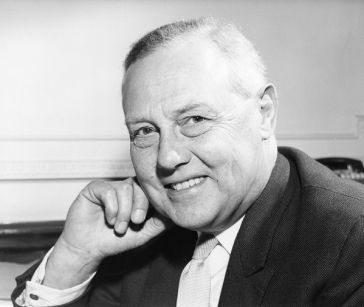
William on retirement from AIT in 1970
Though economic necessity had driven Willie to work in business and finance, he remained a country man at heart. In 1950 he bought Meadfield Farm, a smallholding of about 50 acres on the edge of Haslemere, and here he raised a few pigs and cattle, while Susan grew vegetables. He claimed there were tax advantages and that in the case of another war one would be self-sufficient in food, but a deeper motive was to be able to walk over his own land. However, the amount of work involved for both Willie and Susan became too much, and in 1960 they moved to a more conventional house in the same lane, where they could be more relaxed.
Another of his interests was education and for 29 years he was a Governor of North Foreland Lodge, the school where his sister Finella was Headmistress. He joined the Governing Body in 1937 to bring down the average age of governors and to add some financial expertise. He helped keep the school afloat during the difficult war and post-war periods and in 1958 became chair of its Finance and General Purposes committee, steering a middle course between his sister’s demands for more facilities and the need to keep the fees at a reasonable level while remaining solvent.
Following retirement, Willie engaged himself in charitable work locally, such as with the Weald & Downland open air museum, while they continued to holiday mostly in their beloved Newtonmore.
After a series of house moves in both Haslemere and the surrounding area, they moved into a Retirement Home just 100 yards from Meadfield Farm, where he died from a heart attack on 19 May 1997. His ashes, together with those of Susan, who died on 7 June 1998, are buried at Newtonmore.
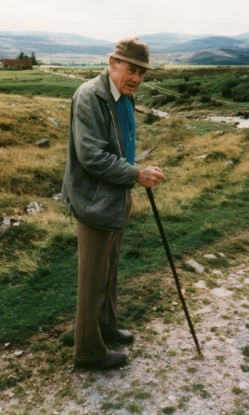
William in Newtonmore about 1990
